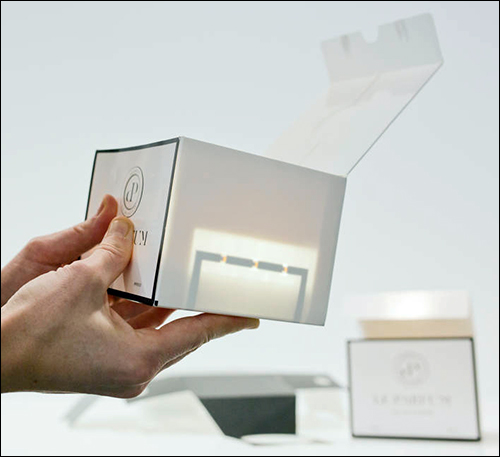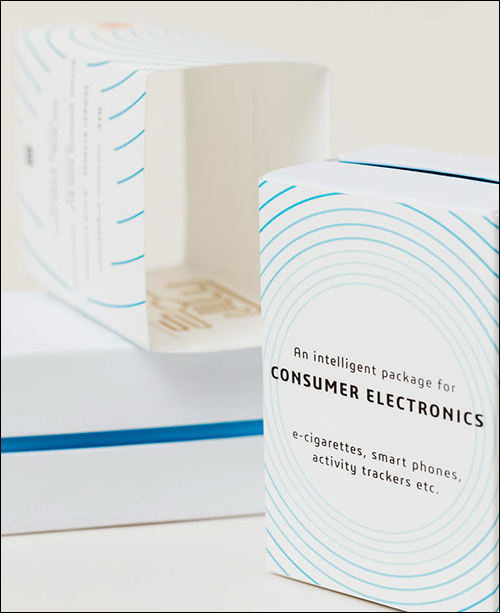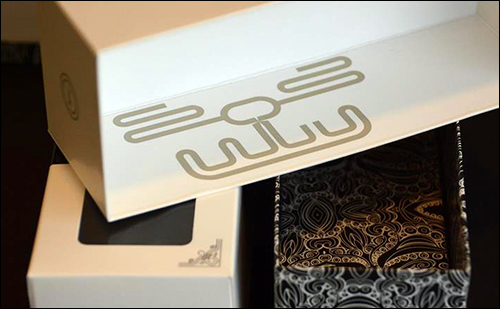Dec 26, 2017European paper, pulp and packaging manufacturing company Stora Enso has begun offering an RFID-based product for packaging connectivity that it calls its Intelligent Packaging solution. The company is providing both Near Field Communication (NFC) and ultrahigh-frequency (UHF) RFID tags, readers and cloud-based software, to manage read data for tracking products as they move through the supply chain or when they are handled by retailers or consumers.

Stora Enso makes products for converters that build brand packaging, as well as for the brands themselves. The company is headquartered in Helsinki, Finland, and is ranked fifth in the world by sales within its industry. Its customers, both converters and product brands, told Stora Enso they could benefit from adding intelligence to the packaging in which products are transported and sold. RFID in packaging would help companies to uniquely identify and track those products.
That led, approximately two years ago, to the concept of using RFID to create intelligent packaging, says Teemu Salmi, Stora Enso's senior VP, CIO and head of digitalization. Initially, the company was focused on a solution for its brand customers, to enable a more direct dialog with consumers. If a product's packaging incorporated a 13.56 MHz NFC tag compliant with the ISO 14443 standard, for instance, consumers with an NFC-enabled smartphone could interrogate that tag, and thus be taken to a website or be provided with content specific to the product. That meant the system could allow a brand to share information about its goods, provide use instructions, or offer promotions and discounts.
However, as Stora Enso developed and began testing the NFC solution for consumer engagement, it found that its customers had other applications that might benefit from other NFC use cases as well. For instance, retailers or consumers could utilize an NFC tag built into the packaging of high-value products to confirm their authenticity prior to a purchase. In addition, an NFC tag attached to a product's enclosure could help an individual detect if that item had been opened and tampered with.
There are also use cases for UHF RFID tags built into packaging. With the longer read range of a UHF tag, stakeholders in a supply chain could capture tag reads within warehouses as goods pass through dock doors, or are stored on shelves.
"An application we see growing interest in is warehouse management and vendor managed inventory," Salmi says. In addition, he notes, UHF RFID-enabled packaging would enable track-and-trace features, and RFID could be used at the pallet level in warehouses. Stora Enso's Intelligent Packaging solution could consist of a tag on every pallet, reusable container or carton, or on the products themselves, depending on the particular use case. At a store, RFID reader antennas on shelves could provide visibility for stock-keeping and replenishment purposes.

Stora Enso's solution is not just a matter of applying tags to packaging, Salmi says. The company also offers the full solution, including cloud-based software, apps, and reader selection and installation. The firm has teamed up with NXP Semiconductors to create NFC or UHF RFID tags using NXP chips, and has begun working with a variety of UHF RFID reader manufacturers for potential warehouse management or other UHF-based use cases within the supply chain. This year, the company has partnered with Microsoft for the use of its Azure cloud-based software, to provide a direct link between the RFID-based data and a user's enterprise software.
The company currently has several pilots under way. In one case, for instance, a consumer goods manufacturer is testing the technology to provide rewards to its customers. An NFC tag is attached to the interior packaging of each product. When a customer purchases an item and opens its packaging, that individual can tap his or her NFC-enabled phone against the tag, and that unique tag ID number will then be captured and forwarded to a server. Once that phone has tapped four such NFC tags for the specific product, the phone will receive a coupon for a fifth product at no cost.
By attaching the tag to the interior packaging, the company can ensure that customers do not simply read the tags with their phones in the store without completing a purchase. Tapping the NFC tag also enables consumers to access use instructions for the product. The tags are integrated into packaging during the converting process.

"We have a full 360 [degree] offering from design of the tag" Salmi says, to testing, installation and integration. "We provide support all the way to app development." Research and development are being carried out at the company's Packperformance Center in Tampere, with a dedicated packaging innovation center for customer collaboration in Helsinkis. In the future, the firm expects the system to be deployed by customers throughout Europe or globally.
The solution is further enabled by the shrinking cost of RFID tags, according to Salmi. "The technology continues to evolve," he states, "and the costs are coming down." This, Salmi reports, makes RFID solution at the item level more affordable.


